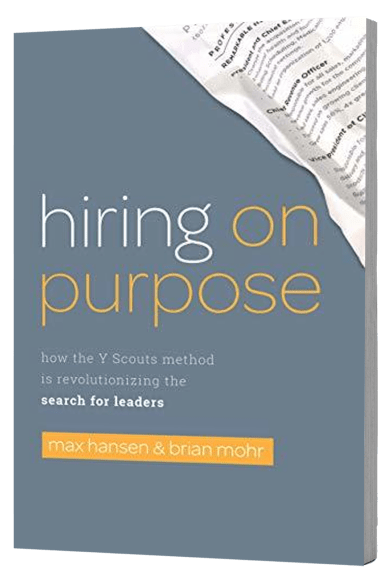Hiring a CEO is one of the most impactful decisions you’ll ever make for your company. But before you post a job description or reach out to a search firm, you need to pause and ask yourself a critical question: do you actually know what kind of a person you want for your next CEO?
It might seem like an obvious step, but too many companies enter the executive search process with only a vague idea of what they’re looking for—usually based on a resume or a checklist of previous titles. That approach can lead to costly misalignments, because a great CEO isn’t just a collection of experiences. They’re a culture driver, a strategic compass, and the person who sets the tone for your organization. If you don’t define what success looks like before you search, you risk hiring someone who checks the boxes on paper but fails to move the business forward.

Table of Contents
ToggleWhy Clarifying Your Vision Matters
You can’t find what you haven’t defined. If you’re relying solely on generic job descriptions or assumptions about what a CEO should be, you’ll miss the opportunity to hire someone who’s aligned with your current needs and future aspirations. That misalignment could cost you more than just time—it can disrupt your team, erode trust, and create leadership whiplash that’s hard to recover from.
When you clarify your vision, you gain a roadmap that guides every part of the hiring process. You’ll ask better interview questions, evaluate candidates more effectively, and—most importantly—attract leaders who are aligned with your purpose. A clearly defined vision also helps your stakeholders stay aligned, which reduces friction during the selection process.
Understand the Context of Your Company
Before you define what you want in your next CEO, you need to take an honest look at where your company is today. Are you in a period of rapid growth, preparing for a pivot, recovering from a crisis, or simply looking to maintain momentum? Each stage requires a different kind of leader, and clarity around your current situation will shape the profile of your ideal candidate.
For example, if you’re scaling quickly and entering new markets, you’ll need a strategic thinker who can keep your company headed toward a desired goal in the midst of change. You’ll want someone who’s adaptable and comfortable with risk and who can inspire the workforce to achieve new heights. Knowing your context keeps you from hiring someone who’s brilliant and capable—but not in a way that serves your company’s current and future needs.
You also need to factor in your company culture. Are you collaborative or hierarchical? Fast-paced or methodical? Visionary or operational? You’re not just hiring someone to run the business—you’re bringing in someone who will influence how decisions are made, how problems are solved, and how people feel about their work. That level of influence requires a strong cultural fit.
Define Success Before You Start the Search
One of the most effective ways to clarify what you need is to start by defining what success looks like. Ask yourself: what do you want this CEO to accomplish in their first 12 to 18 months? Is it revenue growth, a product launch, market expansion, or internal restructuring? Once you know the outcomes you’re aiming for, you can reverse-engineer the competencies required to get there.
For instance, if you want your new CEO to lead a digital transformation, then a track record of leading tech-driven change should be non-negotiable. If your goal is to reestablish brand credibility after a public misstep, then crisis management and communication skills become paramount. Without this level of specificity, you’re more likely to fall back on vague indicators of leadership, like charisma or pedigree—neither of which guarantees results.
It also helps to align your board or leadership team around these expectations from the get-go. If everyone is clear on the role’s true purpose and success metrics, you’ll reduce the chances of internal conflict or decision-making gridlock when it’s time to make the final call.
Prioritize Leadership Traits Over Resume Titles
It’s tempting to zero in on candidates who’ve held the CEO title before or worked at a Fortune 500 company. But titles don’t always tell the full story. What really matters are the leadership behaviors and decision-making patterns that drive meaningful results. You want someone who knows how to think, adapt, and lead in the environment you’ve created—not just someone who has filled another C-suite.
Leadership traits like resilience, vision, and humility often separate good CEOs from great ones. But those qualities don’t always show up on paper. You have to dig for them—through behavioral interviews, scenario-based questions, and conversations with references who can speak to how the candidate actually shows up in high-stakes situations.
You should also consider how the CEO will interact with your existing team. Do they empower others or take a command-and-control approach? Are they open to feedback or stuck in their ways? Do they coach their direct reports or simply delegate and disappear? These dynamics can make or break a leadership team, and you’ll only uncover them if you know what to look for from the start.
Be Real About the Challenges
Every organization has its challenges—whether it’s slow growth, cultural tension, competitive pressure, or shifting industry demands. Be honest about these realities if you want to attract a leader who is prepared to tackle them. Too often, companies “sell” the role by highlighting the upside without addressing the hard stuff.
You should articulate the biggest challenges facing your company and how you expect the new CEO to address them. This gives you a framework to evaluate whether a candidate has the mindset and experience to handle those issues. It also helps candidates self-select out of the process if the challenges don’t align with their skills or interests—saving you both time and energy.
Create a Candidate Scorecard
Once you’ve defined the traits, experience, and success metrics that matter most, organize them into a candidate scorecard. This tool allows you to evaluate candidates against consistent criteria, rather than relying on gut feel or emotional reactions. Your scorecard should include both objective measures (such as industry experience or revenue growth) and subjective ones (like cultural fit and communication style).
Here’s an example of what a simple scorecard might include:
- Strategic Thinking and Vision
- Cultural Alignment and Leadership Style
- Experience Relevant to Current Business Stage
- Track Record of Achieving Similar Outcomes
- Communication and Stakeholder Management Skills
Using a scorecard helps remove bias and makes the final decision easier, especially when comparing finalists who bring very different strengths to the table. It also keeps your hiring process transparent and aligned across decision-makers.
Final Thoughts: Don’t Search Until You’re Sure
When you’re hiring a CEO, you can’t afford to “figure it out as you go.” You need to know exactly what success looks like for your C-suite. This level of clarity doesn’t just make the hiring process easier—it sets the foundation for a stronger leadership transition and long-term loyalty from your executive team.
Need help? Contact our retained executive recruiting firm. We’ll help you with role visioning and success outcome design so you can find leaders who align perfectly with your goals, mission, and values.



